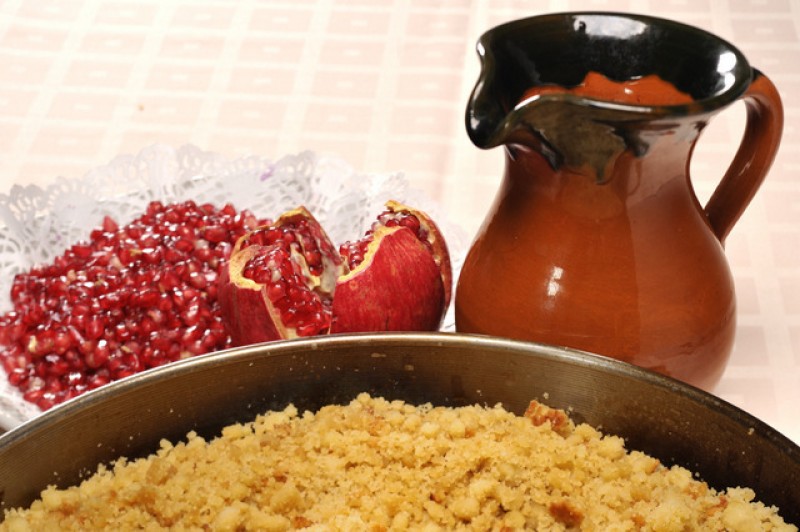Gastronomy of Abanilla
Cold pressed olive oil and locally grown ingredients are the basis of local gastronomic traditions
The gastronomy of the Abanilla municipality is very much linked to its agricultural roots, the historical association with the Moorish occupation which established the irrigation systems still used today, and the raw ingredients readily available in the municipality as a result.
The Moors brought figs, pomegranates, dates and almonds to these shores, ingredients which are still ever present in the food of the area, as are the citrus fruits which flavour sweet pastries and cakes, the vegetables which form the basis of many local dishes such as artichokes, leafy greens including acelga, and the broad beans which pack so much flavour into dishes such as michirones.

Meat slowly grilled over wooden embers or coals (a la brasa) is always popular, and rice with snails and rabbit are the staple fare of the agricultural worker who cooked it over a fire made from prunings; filling, inexpensive, easily available and varying from season to season depending on the accompanying vegetables available.
The annual matanza ensured pork was always present in some form; morcilla blood sausages made with pine nuts, spices and sweet fried onions squeezed out onto bread baked in a wood-fired oven; gachasmigas, a calorific combination of olive oil and flour made into a filling and solid dish served with tropezones, bits of fried and preserved meat throughout the winter, a range of slow cooked guisos (stews) and of course, the ever present embutidos, the sausages smoking in the rafters of rural cottages which provided food for months.

Sweet cakes and desserts combine the nuts and fruits available into a larder of basic staples which change with the seasons; almendrados and cordiales for the winter, made almost entirely from almonds, lard biscuits or mantecados served at Christmas, orange and anis breads, monas cooked with a hard-boiled egg in the centre and eaten at Easter, or family treats such as “buñuelos”, little puffs of wind, fried up for special occasions.
There are several panaderías selling freshly baked cakes, empanadillas (a Spanish version of a Cornish pasty made with tuna, egg and tomato) and bread in the municipality, some still using wood fired ovens.
Another core ingredient ever present in the meals of Abanilla is locally produced olive oil. There are several presses still working in the area, and selling their cold-pressed olive oil; come along and join in with the visits to olive oil mills programmed throughout the year by the tourist office, who will also be happy to supply leaflets about local restaurants and guide groups wishing to book meals for larger numbers of people. Click Tourist Office Abanilla.
Weekly Street markets are also an excellent place in whcih to find local produce, particularly fresh foods, delicatessan products and treats such as olives, pickles and spices. In Abanilla the main market is held every Saturday and there are further markets in the outlying pedanías. Click for full information about weekly street markets in Abanilla.
Click for more information about the Abanilla municipality including what to see and agenda






